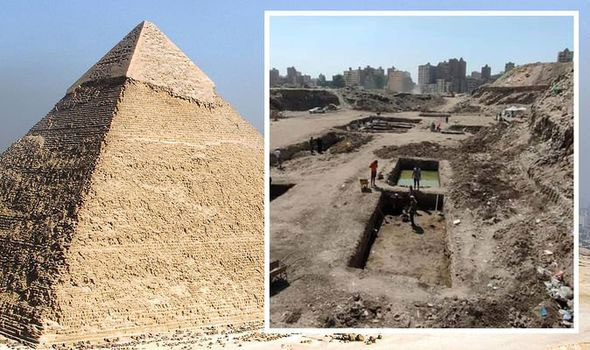Strange inscriptions appear on 2,400-year-old ruins in the pharaoh's temple
Egyptian archaeologists have found 2,400-year-old ruins in a large pharaoh temple, on which strange inscriptions are engraved.
The discovery was made by a team of Egyptian and German experts at the Matariya archaeological site in Heliopolis. In ancient times, Mataraya was part of Heliopolis, the capital of Lower Egypt and a major religious center. The blocks and fragments found, made of basalt, are believed to belong to the western and northern faces of the temple of King Nectanebo I. The team believes that this is also an extension connecting the sanctuary to the main axis of the temple. the area worshiping the sun god, Amun-Ra.

Archaeologists have made an unexpected discovery in Egypt. (Image: Getty)
Ayman Ashmawy, from Egypt's Supreme Council of Antiquities, said the hieroglyphs inscribed on the blocks refer to the 13th and 14th years of Nectanebo's reign (circa 367-366 BC). He told Ahram Online: "The blocks have not been completed and they appear to have been abandoned after the death of Nectanebo I in 363 BC". He added that these structures probably date from Ramesses II (1279-1213), Merenptah (1213-1201 BC) and Apries (589-570 BC).
The team also discovered a baboon statue, pedestal and part of a quartz tower, all dating from the reign of pharaoh Osorkon during the Middle Kingdom (925-890 BC).
In addition, a temple to the god Shu and goddess Tefnut built by King Psamtik II, who reigned from 595 to 589 BC, has also been excavated.
The oldest find is a sacrificial table of pharaoh Tuthmosis III in the 15th century BC.
The Thirtyth Dynasty was the last dynasty before the Egyptian empire came under Persian control until it was taken over by Alexander the Great in 332 BC. King Nectanebo spent most of his reign fighting the Achaemenid Empire from Persia. He ordered the construction of many structures throughout the empire, including a temple of Isis on the island of Philae near Aswan.
- Excavating the 5,000-year-old temple ruins
- Discovered the 3400-year-old temple of the ancient Egyptians
- Discovering 1,000-year-old Cham Pa ruins
- Discovered a thousand-year-old Cham temple complex
- Egypt reveals the tomb ruins of nearly 4,000 years old
- Display the 2,000-year-old stone carvings written in the name 'Jerusalem' in Hebrew
- The mystery of an ancient temple sits deep in the forest in Cambodia
- Repair sewer, dig ... whole mysterious temple 2,200 years old
- Found a 5,000 year old stone temple
- The mystery behind the strange, permanent landmarks is not allowed to open
- Discovered 3,000-year-old megalithic temple in Peru
- Discover shocking images of modern bicycles in the 2,000-year-old temple
 Discovered an ancient centipede fossil 99 million years old
Discovered an ancient centipede fossil 99 million years old Discovered bat-like dinosaurs in China
Discovered bat-like dinosaurs in China Discovered a 200-year-old bronze cannon of the coast
Discovered a 200-year-old bronze cannon of the coast Discover 305 million-year-old spider fossils
Discover 305 million-year-old spider fossils